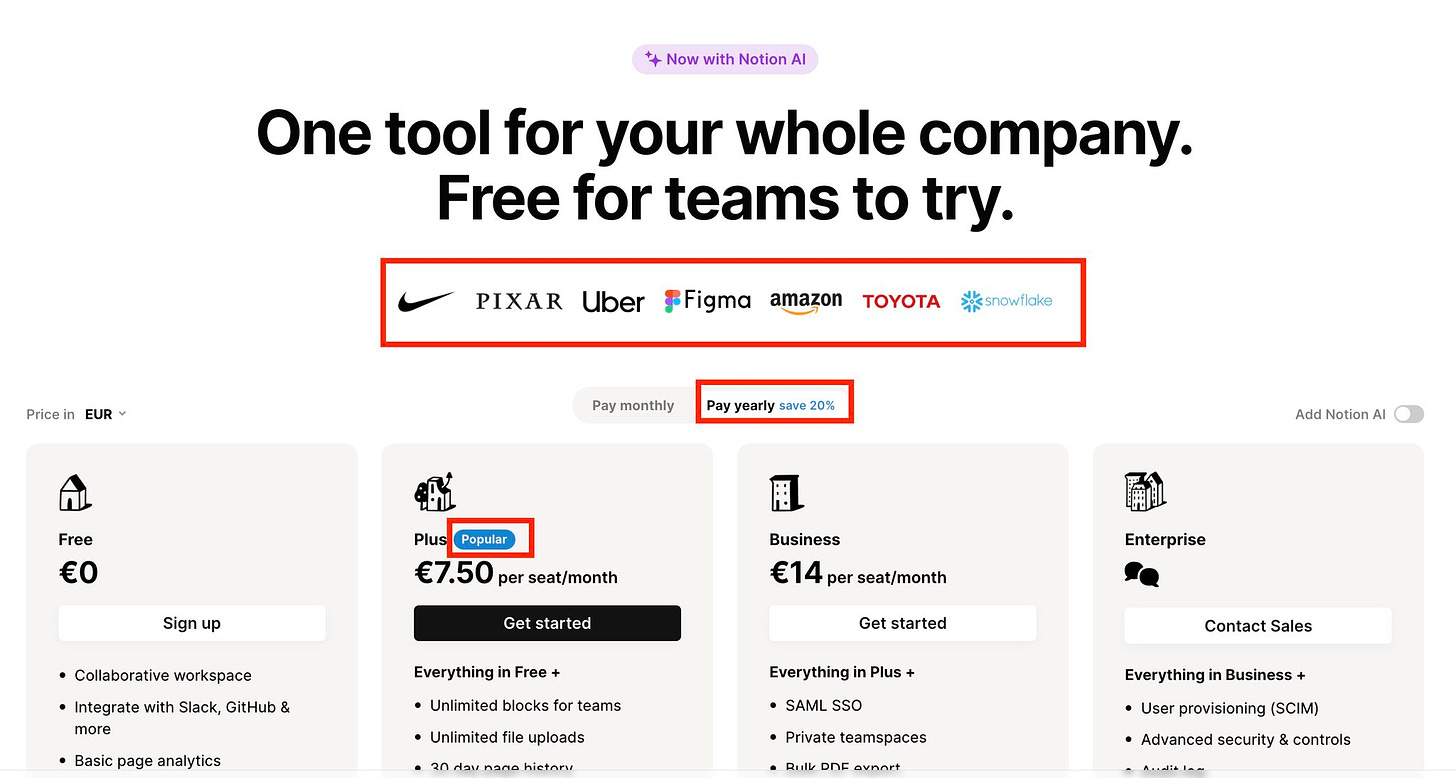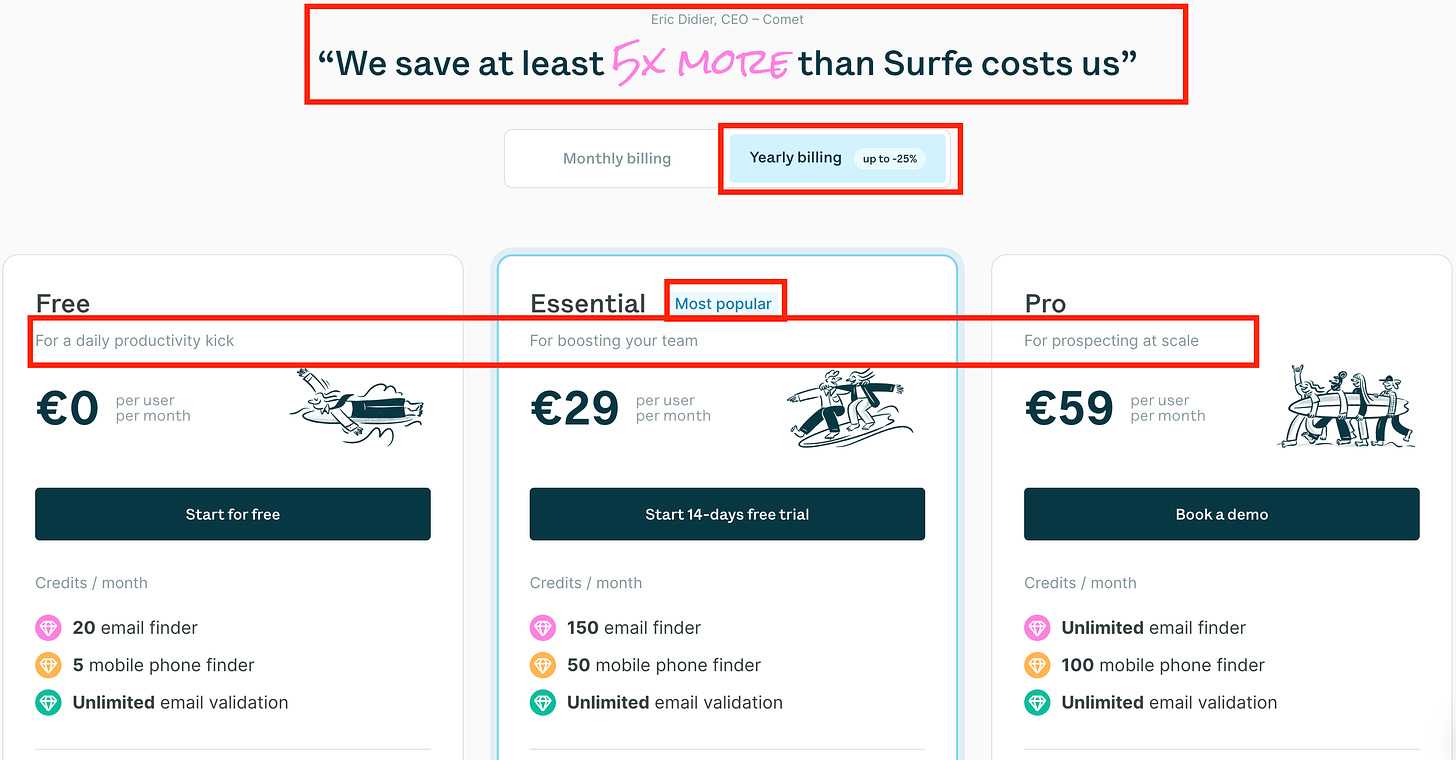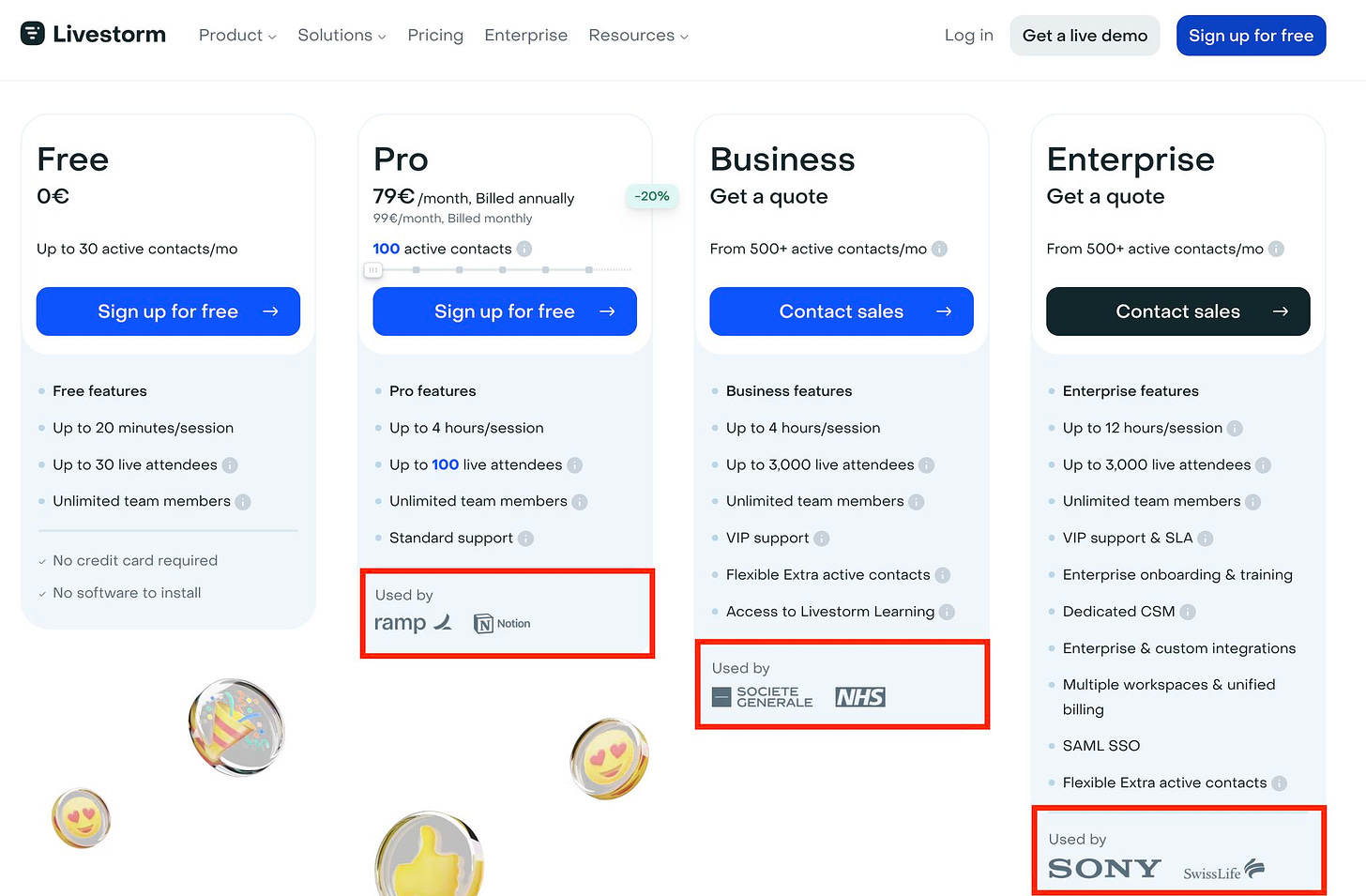The right time to scale your SaaS - The 3 scale-readiness indicators
Bonus: Pricing page quick fixes; The ‘old way’ vs. ‘new way’ website section
Hey - it’s Alex!
Today we cover:
1️⃣ The right time to scale? 3 scale-readiness indicators
2️⃣ The ‘old way’ vs. ‘new way’ website section
3️⃣ Pricing Page Quick Fixes
If you read until the end, our bonus material: The most relevant SaaS Network effects by Ayush Poddar.
If you’re new to the newsletter: I share with you bi-weekly 3 actionable growth tactics that will help you quickly grow your SaaS business from €0 to €1 million ARR 🚀.
A quick word from our sponsors
📢 Boopos - The #1 online platform to sell & buy businesses with financing available.
Unlock business opportunities with Boopos. Your marketplace for selling, and buying businesses. Get financing to acquire your next venture with expert advisor guidance.
📢 Snowdrop - The tiny design studio for ambitious founders who care about design.
Snowdrop assists you in designing products that attract and convert. UI/UX design for web & mobile and Framer website development. Subscription or one-time project. Only 3 design slots available.
Special offer: Get a UI/UX audit of your website or product for free (worth 499€). Simply book a call and mention ‘Alexestner’.
Want to reach 3200+ early-stage SaaS founders/leaders? Sponsor the next newsletter (booked out for the next 2 months).
1. When is the right time to scale? 3 scale-readiness indicators
As a founder you always ask yourself:
“When is the right time to scale the business?”
Knowing when it’s the right time to spend more money on acquisition and adding more people to the team.
You often hear about 2 types of founders.
1️⃣ Invest too early
Some startups/founders, especially if they raised their first investment, invest too early. They hire a lot of people and spend €€€ on paid channels. If you do this before product-market fit, you will burn a lot of money (without growing your business).
2️⃣ Invest too late (or never)
Quite the opposite of the first type of founders. They have great metrics and strong signals that they are ready to scale, but still don’t do it. They always feel…
“there is one more thing to do and then we can double down”
So finding the right timing is not easy. But here are 3 indicators that make it easier to hit the right timing.
The 3 scale-readiness indicators
The 3 scale-readiness indicators are:
Product Market Fit
Repeatable Growth
Internal Readiness
Let’s dive into each of them.
#1 Product-Market Fit
Product-market fit is what all early-stage founders want to achieve.
It’s an approach to measure if customers are satisfied with your product and tell others about it.
✅ How satisfied are your customers with the product?
✅ Are they raving about your product?
✅ Do they tell others to use it?
If you want to measure product market fit, choose one of the following metrics.
1️⃣ (logo) churn rate
Do customers stick to your product? Measure the % of your paying customers that churn every month (or year). Compare your churn rate with industry and customer segment (SMB vs. enterprise clients) benchmarks. Good churn rates can vary between 1-3% up to 10% or more per month.
2️⃣ (usage) retention rate
If you’re early stage and sell lots of yearly contracts, logo churn rate on a monthly base can give you wrong signals. So instead of waiting till the end of the contract period and hoping for the best, track the product usage retention of your customers.
If clients reduce/stop using your product, it’s an early indicator of future churn.
Ideally, you see the opposite, so they get more active every month.
3️⃣ Sean Ellis test
This test is simple but very powerful. You run a survey and ask your customers how they would feel if they could no longer use the product.
How would you feel if you could no longer use the product?
You give them 3 options to choose:
☑️“very disappointed”
☑️ “somewhat disappointed”
☑️“not disappointed”
You hit product-market fit if 40% and more choose “very disappointed”.
#2 Repeatable Growth
To scale, you need repeatable and predictable growth.
Repeatable means:
one or more channels, that you know consistently brings in news leads
messaging that resonates with your ICP and converts them to paying clients
In short: Channel-Market fit and Message-Market.
Predictable means:
you know how it costs you to acquire a new customer (aka. customer acquisition costs)
you know how much revenue you make with a new customer (aka. customer lifetime value)
and how much it costs you to keep the client
In short: Good unit economics
Repeatable and predictable growth allows you to scale.
#3 Internal readiness (team & processes)
Even if you hit product-market fit and find repeatable and predictable growth, you need to prepare internally for scaling.
And internal readiness is what most founders forget about.
You and your team need to be ready to add new team members and spend more money on marketing and sales.
Here are some things to consider:
✅ Playbooks (e.g. Sales Playbooks)
✅ Onboarding plans
✅ Org Chat & team structure
✅ Reportings & Meeting formats
✅ Compensation plans (e.g. for your sales team)
✅ Tools & Tech stack (ready to use for more users)
👉 You’re ready to scale your SaaS, if you can say yes to Product Market Fit, Repeatable and predictable Growth, and Internal Readiness.
🚨 Before you read on:
👉 Build your GTM strategy with my free SaaS GTM Strategy Workbook (helped 3000+ SaaS leaders)
👉 Get access to 90+ actionable SaaS growth tactics (helped 200+ SaaS leaders) - 100% positive ROI guarantee.
👉 Work 1-on-1 with me - GTM Advisory for early-stage SaaS founders on their way to hitting the first €1 million ARR (1 free spot - limited to 8 founders).
❤️ Get exclusive benefits for sharing my newsletter with your SaaS network.
2. The ‘old way’ vs. ‘new way’ website section
The problem section is a key section on your SaaS homepage.
👉 Get the perfect SaaS Homepage Template
With this section, you set the context.
You connect with the visitor and present them with their ‘shitty’ status quo.
All before you introduce your product as the right solution.
This section mainly has 2 reasons for existing:
1️⃣ Tell the visitors about their ‘shitty’ status quo, so they know they have a problem (that’s worth fixing).
2️⃣ (dis)qualify visitors: if they do not resonate with this section, there’s a high chance that your product is NOT relevant to them.
If you ignore this section, you assume that your customers know about their shitty status quo.
One great way to design the problem section is a comparison of
The 'old way'
vs.
The 'new way'
Here are some great examples of old vs. new way.
3. Pricing Page Quick Fixes
People who visit your pricing page have usually some sort of buying intention. Today I want to share with you some hands-on quick fixes for your pricing page.
Notion pricing page
3 things that I like about their pricing page
1️⃣ Adding logos for social proof
2️⃣ Highlight 20% discount for yearly plan
3️⃣ Highlighting 'popular' plan
And 2 things that would make it even better (IMO):
1️⃣ Adding 1-sentence below each plan (who is this for)
2️⃣ Isolating the 'popular' plan a bit more (e.g. different color)
Surfe pricing page
1️⃣ Adding a ROI focused quote --> Customer quote on the value surfe brings compared to the cost
2️⃣ short tagline who the plan is for --> Describes (indirectly) the target audience for each plan
3️⃣ Highlighting the savings for yearly plan --> Make the yearly plan more attractive
4️⃣ Isolating the most popular plan --> Nudge people to their preferred plan
Livestorm pricing page
1️⃣ Add customer logos to your pricing tiers
Logos are a great way to add social proof.
You can add on each pricing plan:
🔸 2-3 logos/names that use this plan
🔸add 'used by' or 'Helps companies like...'
Doing so will help your visitors to know which plan is right for them.
Because either they know that they are similar to the ones mentioned, or that they want to be like them.**
💪 Bonus material (software, content, news)
—> The most relevant SaaS Network effects by Ayush Poddar
—> The 10 SaaS GTM myths that are still true in 2024
—> AI Pricing: 40 leading AI pricing models
—> Simple hack to get more people reading your blog posts
Happy growth 🚀.
🚀 3 ways I can help you grow your SaaS to €1 million ARR:
GTM advisory for early-stage SaaS founders on their way to hitting the first €1 million ARR - Work with me 1-on-1 in weekly or bi-weekly deep-dive working sessions to build and execute your powerful GTM strategy.
List of 90+ actionable SaaS Growth Tactics and Free SaaS GTM Strategy Worksheet.
Sponsor this newsletter - Reach 3200+ early-stage SaaS founders/leaders.
For daily actionable tips to grow your B2B SaaS business, follow me on Linkedin.












